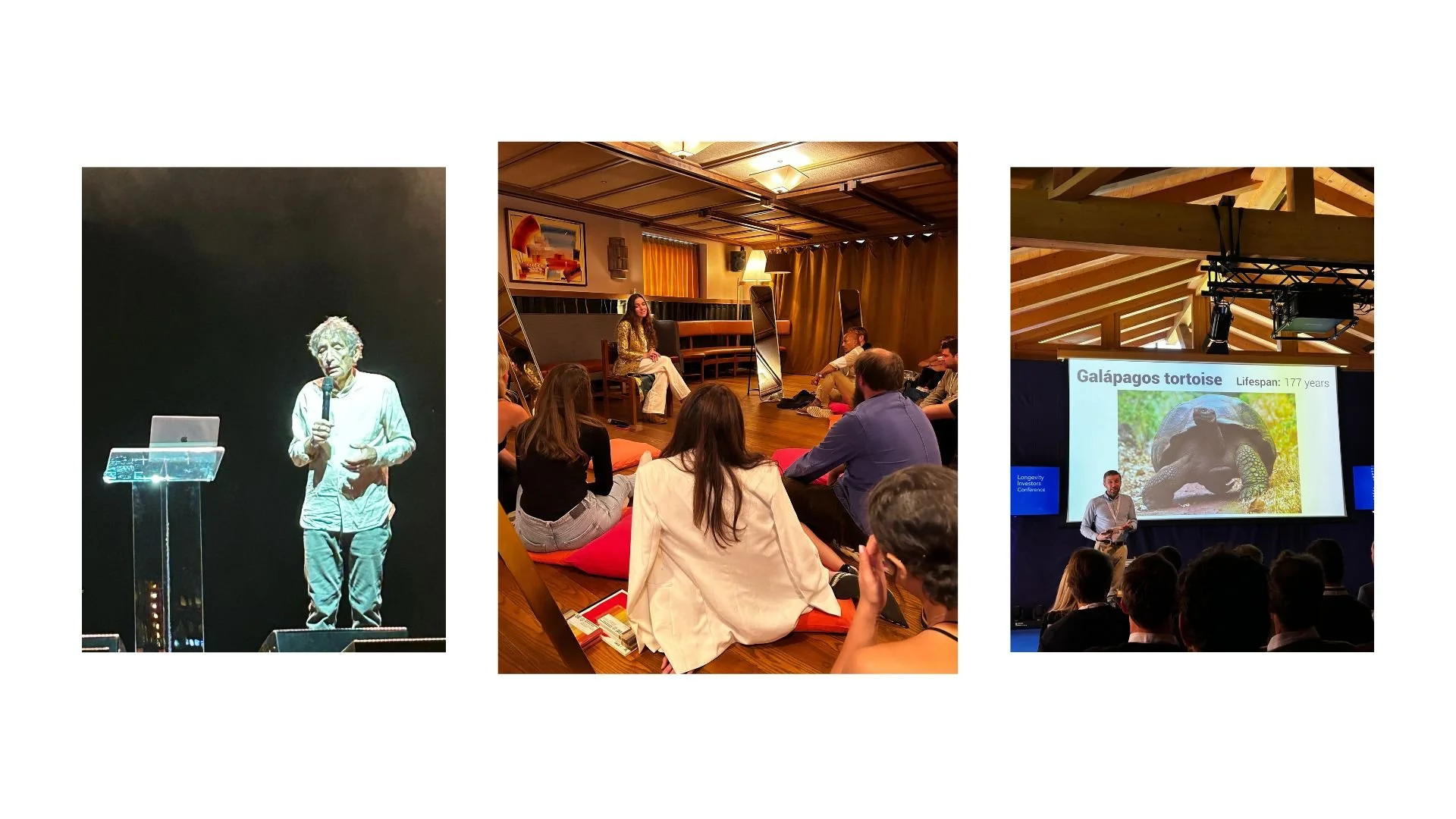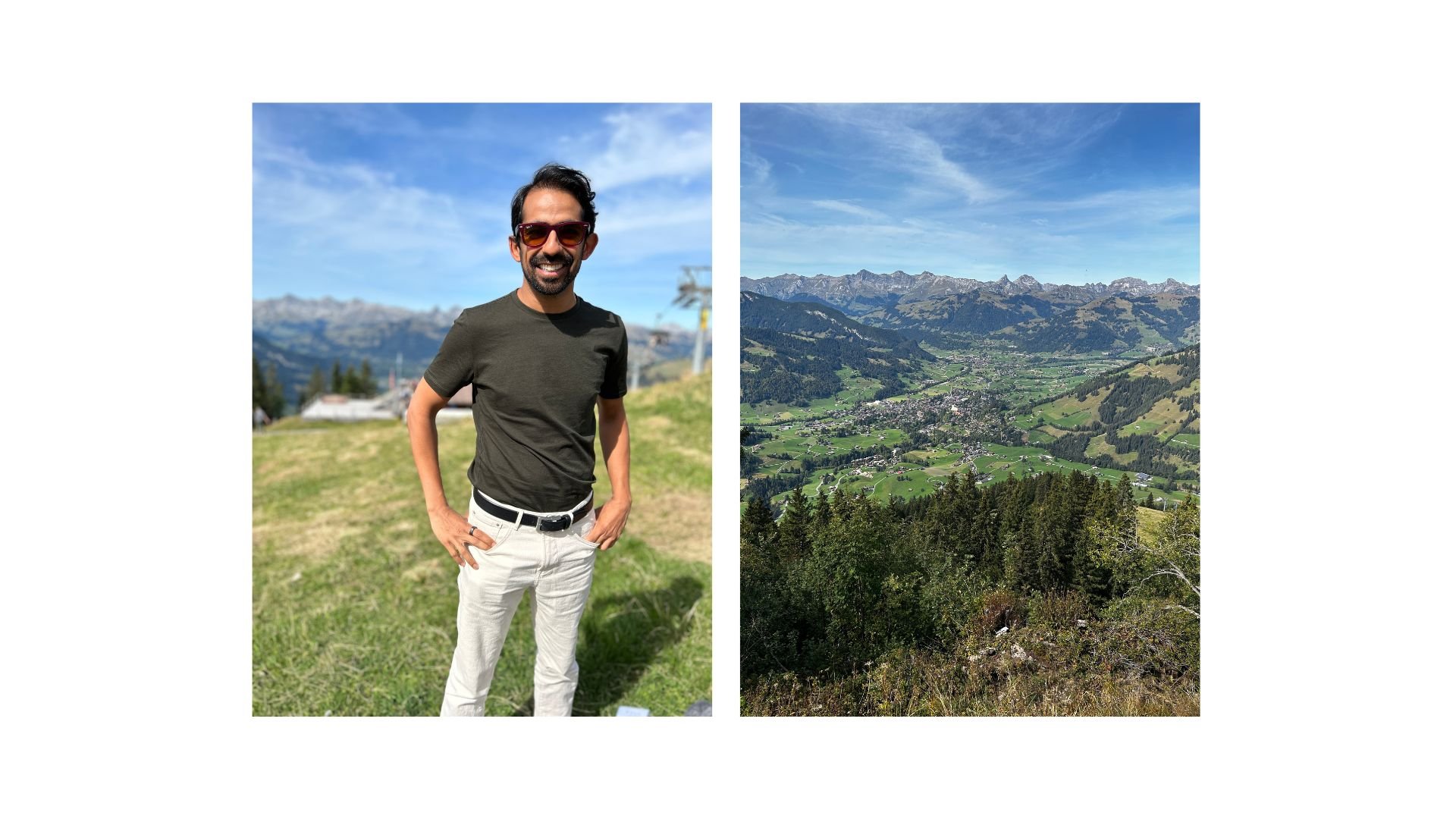How to Not Live
London's misty mornings and Switzerland's majestic alps served as my backdrop last week, as I immersed myself deeper in the world of longevity.
It was a bit surreal, standing amidst the pioneers of the field: author and clinician Gabor Mate with his Canadian charm, David Sinclair, a twenty-year Harvard researcher changing the field, and Bryan Johnson, who has claimed to reverse age himself from forty-six to twenty-six.
Longevity has been an interest of mine for a long time now.
About seven years ago, I started biohacking. Much like the initial days of a promising startup, I was filled with a mix of excitement and caution. The mission was simple yet daunting: to understand and optimize my health.
It began with a spreadsheet. I tracked everything - from the tranquility of my meditation sessions to the frenetic pace of my daily step count. My 2015 spreadsheet became a mirror, reflecting not just tangible metrics like weight and sleep but also the ebb and flow of my mental clarity, food intake, socializing and general emotional regulation. I then began correlating data with variables like weather, day of the week, location and the number of meetings I had. It felt groundbreaking.
However, as is often the case with my passions that flare brightly, I risk getting all consumed.
My engineer's mind loved building the system, sometimes even more than in understanding the insights it provided. Making tweaks to my routines became a game. How would my step count shift if I changed my diet when I was traveling? What happened to my sleep if I meditated in the evening instead of the morning? The quest for answers turned into an obsession, and the joy of discovery was slowly overshadowed by the weight of constantly being watched.
A realization struck a few years into my biohacking obsession. The tools I had embraced to enrich my life were, ironically, taking away from life. I then began distancing myself from the relentless data and spreadsheets, seeking instead a balanced data-free approach to health.
As I stood amidst the intellectual giants at the conferences, I was reminded of the delicate interplay between passion and obsession, and the importance of ensuring that my pursuit of longevity doesn't overshadow my joy of living.
When I moved to Portugal over two years ago, my inner biohacker was reawakened. In my new surroundings, I revisited my previous endeavors, but with a renewed fervor.
Monthly blood tests became my norm, where I probed into over one hundred health markers. Sleep studies, gut health, nutrition, toxicity levels, skin and eye health — even tracking hair loss. If there was a metric, a number, or a graph I could find, I had it. My thirst for knowledge turned into an avalanche of data, stored meticulously in Google Drive folders. One could say that I had created a digital labyrinth, and I was its tireless architect.
My relentless pursuit didn't just bewilder me, but even the medical professionals I started working with. The look on their faces was unmistakable as they tried to filter through my exhaustive reports. The turning point was a candid conversation, where concerned doctors gently pointed out my spiraling obsession. They were right.
It was déjà vu, reminding me of the earlier crossroads I'd faced. Taking their words to heart, I once again decided to scale back, opting for a more balanced, holistic approach to health.
Ironically, as I began detaching from the deluge of data, a newfound peace settled in.
My health, mental, emotional, energetic and physical, felt reinvigorated. It was as if by letting go of the constant need to measure, I was truly starting to live. The journey had come full circle, underscoring the timeless lesson that sometimes, less truly is more.
The realm of science and research is experiencing leaps and bounds, demystifying the intricacies of the human body and the enigma of aging. It feels like an exhilarating time to be alive, standing at the cusp of revolutionary discoveries.
As with every boon, however, there comes a caveat. The more I delve into the world of biohacking and the wider scientific community, the clearer it becomes: intentionality is key.
Just as a painter knows that the brush is but a medium to bring their vision to life, I realized that these advances, these tools, are just that – instruments. Their power lies not in their inherent capability, but in how judiciously they are used.
This revelation became even more poignant for me at the conferences. A recurrent theme emerged from the voices of thought leaders and visionaries: the tantalizing prospect that humans might be on the brink of outliving death. Or at least staving off premature death from preventable disease.
The very pursuit to defy death, to extend one's years, seemed to obscure the essence of truly living. I recall Bryan Johnson, his attire emblazoned with the bold words “don’t die.” As he enthusiastically laid out his regimented routine and lifestyle, an alternative caption for his shirt began to form in my mind: “don’t live.”
The irony wasn't unfamiliar to me. On multiple occasions, I'd plunged headfirst into the deep end of health obsession. I meticulously tracked, measured, and analyzed, letting this pursuit eclipse the myriad other facets of existence. Time and again, introspection led me back to the understanding that health isn't the purpose but the means. It's what enables me to live.
There's a timeless proverb that elegantly captures this duality: “A healthy person has one thousand worries; an unhealthy person has only one.”
In my most obsessive phases of health-tracking, I became a healthy person with one thousand worries. Much of my anxiety was a creation of my own psyche, an intricate dance of my mind convincing my body of issues that weren't really there.
And this is how I learned how to not live.





